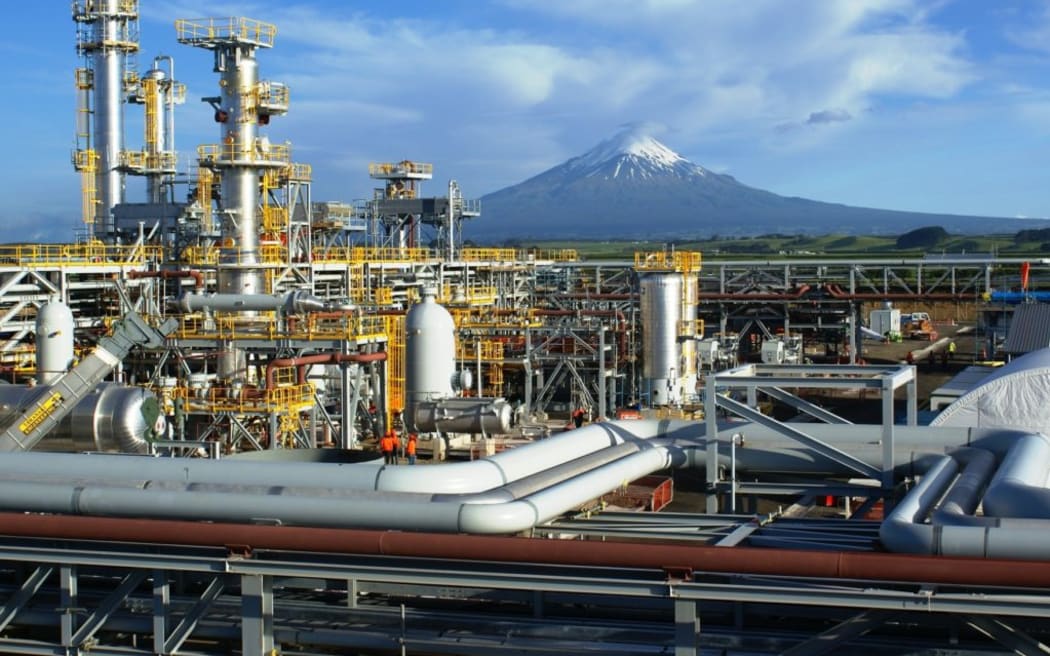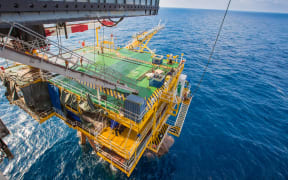
The Kupe production facility operated by Beach Energy. Photo: Beach Energy
The Environmental Protection Authority is under fire for withholding information about a leak at a suspended oil and gas well-head at Kupe off the coast of Taranaki.
It took five years, two official information requests and a complaint to the Ombudsman for the agency to release details of its investigation.
Climate Justice Taranaki got wind of the inquiry while preparing a submission on Beach Energy's application for resource consents to drill new development wells at Kupe.
It asked the EPA for details, but it twice knocked back official information requests, arguing it would prejudice an ongoing investigation.
Climate Justice went to the Ombudsman and earlier this month the EPA released two reports relating to the inquiry.
Beach Energy's new resource consents were approved in March.
Climate Justice researcher Catherine Cheung said that was not good enough.
"It feels like the EPA are protecting the company. I mean, why release the reports only after the decision on the application for new drilling is approved?", Cheung said.
"You know - why wasn't it done during the submission period when submitters could ask questions?"
The released documents included a 2018 EPA inspection report, which found "harmful substances" were leaking from a suspended well at Kupe - recently bought by Beach from Origin Energy - and that the leak had not been reported in a timely fashion.
Adding insult to injury, when Climate Justice made a follow up enquiry - it was rebuffed once more.
"So I asked the EPA if it was still leaking and what's been done since 2018 and they said my questions will be dealt with as an OIA [Official Information Act] request," Cheung said.
The EPA told RNZ that Beach Energy had produced reports related to mitigation and abandonment of the well and installed equipment to monitor the discharge.
"We continue to communicate with Beach Energy on the KS-2 well discharge and other regulatory agencies with responsibilities in relation to the status of the well-head, including WorkSafe and Maritime New Zealand," it said in a statement.
The other document released was a 2018 Maritime NZ audit of Kupe, which revealed a list of "failures".
These included the absence of a valid Certificate of Fitness reflecting the new ownership, an out-of-date oil spill contingency plan and failure to comply with its internal Emergency Management Plan.
Cheung said these were not trivial.
"Some of them are really quite damning, and again we were not informed, we were not being told of this behaviour."
Maritime NZ said changes had been made at Kupe and a subsequent 2019 audit gave Beach Energy the all-clear.
"Once we confirmed corrective and preventative measures were in place, the compliance team considered no further action was necessary."
Maritime NZ said questions about why the report was not released should be directed at the EPA.
The EPA said following Climate Justice's complaint to the Ombudsman, it had another look at the documents.
"We reconsidered the status of the two documents, and decided to release them. We considered that their release would no longer prejudice the ongoing investigation, as the information in the reports dates from the end of 2018."
Beach Energy said it took very seriously its obligation to safely deliver energy to its New Zealand customers, in compliance with all government regulations.
Beach Energy NZ manager and operations manager Mat Quinn said the Maritime NZ observations were minor in nature and mostly related to documentation updates to do with the change of owner.
He said Beach inherited obligations to the leaking well-head.
"Beach regularly monitors the integrity of the old well and will continue to do so until it is decommissioned. Beach believes we are fully compliant with all EPA and Maritime NZ requirements."
Quinn was only too happy to reveal details of the leak.
"Sub-sea observation of the well shows a minor leak estimated to be approximately 500 grams of hydrocarbon gas per year (the equivalent to 1/18th of a 9kg LPG BBQ cylinder each year) and does not pose any risk to Beach staff, the environment, marine life, or the public."
Cheung said regardless, the information should have been released.
"At the time, during the application for Beach Energy's new drilling, the applicants and the submitters should know or should've been informed and the EPA should've given out the inspection report."
The EPA said it continued to monitor the discharge at Kupe and the investigation remained open.




